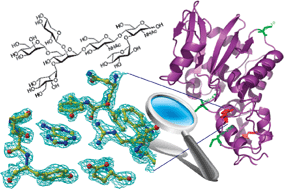The role of the glycan moiety on the structure–function relationships of PD-L1, type 1 ribosome-inactivating protein from P. dioica leaves
Abstract

* Corresponding authors
a
Dipartimento di Scienze della Vita, Seconda Università di Napoli, Via Vivaldi 43, I-81100 Caserta, Italy
E-mail:
angela.chambery@unina2.it
Fax: +39 0823 274571
b Dipartimento delle Scienze Biologiche, Sez. Biostrutture, Università degli Studi di Napoli “Federico II”, Via Mezzocannone 16, I-80134 Napoli, Italy
c Istituto di Biostrutture e Bioimmagini, CNR, via Mezzocannone 16, Napoli, Italy
d Dipartimento di Biologia di Base ed Applicata, Università degli Studi di L'Aquila, Via Vetoio, I-67010 Coppito, Italy

 Please wait while we load your content...
Something went wrong. Try again?
Please wait while we load your content...
Something went wrong. Try again?
V. Severino, A. Chambery, A. Di Maro, D. Marasco, A. Ruggiero, R. Berisio, F. Giansanti, R. Ippoliti and A. Parente, Mol. BioSyst., 2010, 6, 570 DOI: 10.1039/B919801F
To request permission to reproduce material from this article, please go to the Copyright Clearance Center request page.
If you are an author contributing to an RSC publication, you do not need to request permission provided correct acknowledgement is given.
If you are the author of this article, you do not need to request permission to reproduce figures and diagrams provided correct acknowledgement is given. If you want to reproduce the whole article in a third-party publication (excluding your thesis/dissertation for which permission is not required) please go to the Copyright Clearance Center request page.
Read more about how to correctly acknowledge RSC content.
 Fetching data from CrossRef.
Fetching data from CrossRef.
This may take some time to load.
Loading related content
